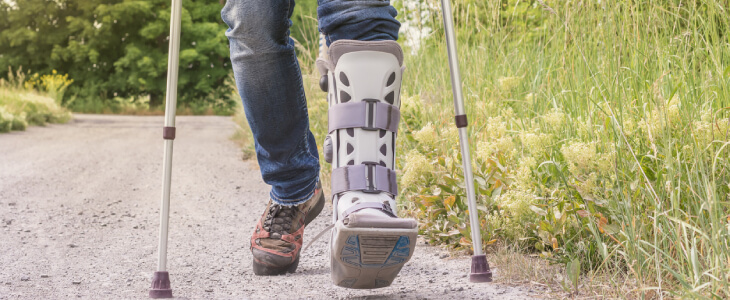Orthopedic trauma refers to sudden, severe injuries to the musculoskeletal system. At Long Island Spine Rehabilitation Medicine, many of our patients come to us with traumatic orthopedic injuries to their bones, joints, ligaments, tendons, muscles, and nerves. These injuries typically require immediate and comprehensive care.
Because we are a nonsurgical practice, if we diagnose injuries that require an operation, we refer patients to a well-respected surgical colleague. In many cases, however, we are able to treat traumatically injured patients with a combination of our innovative, nonsurgical methods. Our physiatrists also often provide preparatory therapies and aftercare prescribed by surgeons who rely on our talents.
How Traumatic Injuries Occur
Orthopedic trauma can result from dramatic events or seemingly insignificant incidents, including:
Assaults and Gunshots
Violent encounters like assaults and gunshots can cause severe damage to bones, joints, and soft tissues or even severe spinal injuries that may result in paralysis.
Traffic Accidents
Traffic accidents, particularly those involving vulnerable individuals like bicyclists, motorcyclists, skateboarders, and pedestrians, are a common cause of orthopedic trauma. These incidents can lead to simple or complex fractures, dislocations, torn ligaments serious back injuries.
Sports Accidents
Amateur or professional athletes, in spite of warm-up exercises and careful training, remain at risk of suffering orthopedic injuries. Contact sports like football or hockey, and even non-contact activities like running, can result in acute injuries, including ligament tears, dislocations, and fractures.
Construction Accidents
The construction industry, with its inherent risks involving falls from scaffolds or into cavernous holes, caught in-between accidents, explosions, and overturns of heavy machinery, is a significant source of orthopedic trauma not only to workers but to passersby.
Examples of Traumatic Orthopedic Injuries
Orthopedic trauma can manifest in various forms, each requiring a tailored approach to treatment. At our offices, we frequently treat:
Fractures: Ranging from simple breaks to complex, multi-fragmented fractures.
Dislocations: Often occurring in shoulders, knees, and hips, requiring immediate attention.
Soft Tissue Injuries: Including ligament tears, tendon ruptures, and muscle damage.
Spinal Injuries: Such as vertebral fractures, herniated or ruptured discs, and spinal cord injuries.
The Varied Ways LI Spine Treats Traumatic Orthopedic Injuries
At Long Island Spine Rehabilitation Medicine, our approach to treating orthopedic trauma is multi-faceted, incorporating both traditional and complementary techniques. We assess each patient carefully, aware that no two traumatic injuries are identical. Depending on the nature and severity of your injury, and on your own personal preferences, we may administer one or more of the following treatments:
Epidural, Facet, or Trigger Point Injections to provide significant pain relief and assist in the recovery process. Depending on the location of your injury, these shots are meticulously administered under ultrasound or fluroscopic guidance to ensure accuracy.
Radiofrequency Ablation to reduce pain by deadening the nerves responsible for sending pain signals to the brain.
Knee Viscosupplementation to provide lubrication and cushioning to the knee joint by injecting a gel-like substance that helps to relieve pain and swelling, and improve mobility.
Customized Physical Therapy to address your individual strength and range-of-motion issues in order to restore strength, flexibility, and function to the affected area.
Platelet-Rich Plasma (PRP) Therapy to use elements of your own blood (platelets) to enrich your body’s healing mechanisms, speeding your recovery.
PEMF (Pulsed Electromagnetic Field) Therapy to accelerate bone healing, wound care, and reduce post-operative knee pain and swelling by using electromagnetic energy as a force to enhance the speed of your recovery.
Acupuncture to reduce pain and inflammation, increase circulation, and accelerate healing.
Do You Have a Traumatic Orthopedic Injury? Call Us Now To Find Out
For over 25 years, our wide range of treatments has been effectively reducing pain and inflammation, increasing mobility, and accelerating the healing process for patients who have suffered traumatic orthopedic injuries. If you have suffered a traumatic orthopedic injury, or are unsure of the severity of the damage, contact us for a rapid, accurate evaluation and the immediate care you need.
